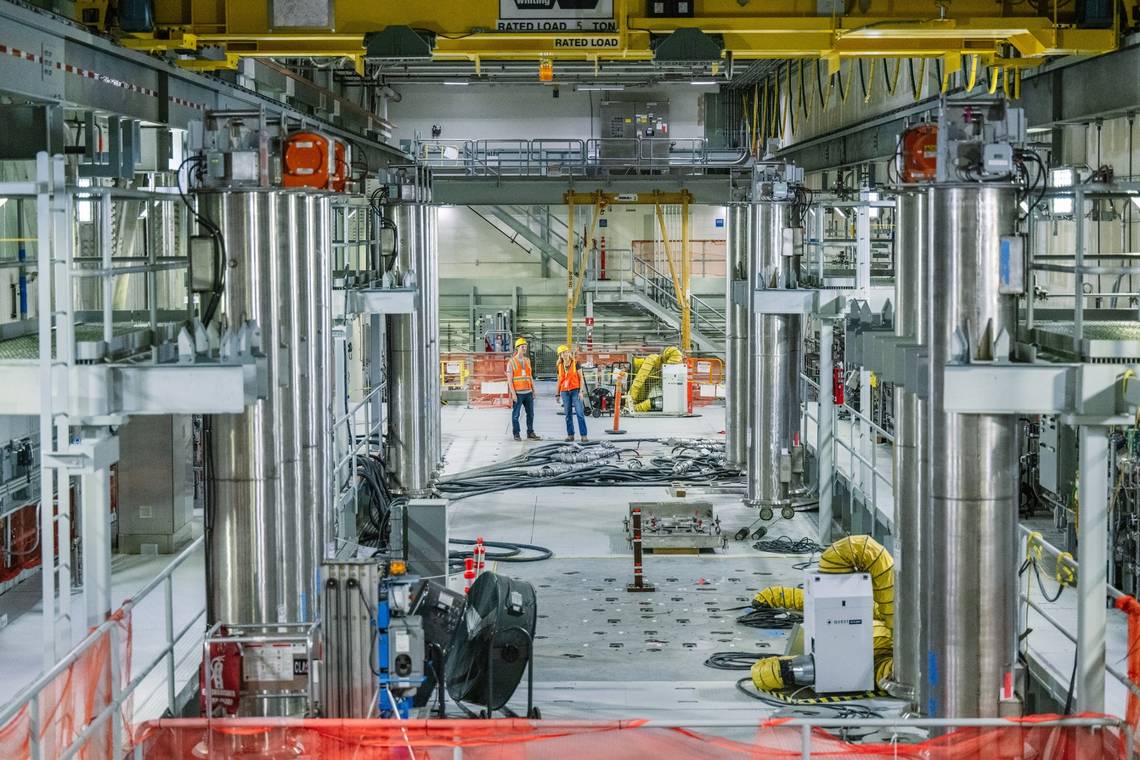KENNEWICK — The world’s largest radioactive waste melter has heated up to 2,100 degrees Fahrenheit, its planned operating temperature, on a second try.
The first melter to be used to glassify waste at the vitrification plant at the Hanford nuclear reservation site in Eastern Washington is expected to be kept at that temperature for several days.
Then ground glass will be added as the next step of testing the melter.
“Completing the heat up of the first melter is a major step forward for Hanford’s tank waste mission,” said Ed Dawson, DOE spokesman.
The melter is expected to remain on continuously now for its planned lifespan of five years.
Construction on the vitrification plant started 21 years ago and the plant is expected to start treating some of the least radioactive waste held in underground tanks at Hanford by late 2024 or 2025, turning it into a stable glass form for disposal.
Hanford’s underground tanks hold 56 million gallons of radioactive and hazardous chemical waste from the production of nearly two-thirds of the plutonium for the nation’s nuclear weapons program during World War II and the Cold War.
Bechtel National, the contractor building and commissioning the vitrification plant for the Department of Energy, attempted to heat up the vitrification plant’s first 300-ton melter on Oct. 8.
But heating was halted just after midnight the morning of Oct. 10 with temperatures only close to 300 degrees after a problem was discovered with the power supply to the melter’s startup heaters.
Temperatures were rising in the power supply cabinets, and pictures taken after the heat up was halted showed blackened inductors in one of the three cabinets.
Troubleshooting to thoroughly understand the cause of the problem, a detailed check of all melter heater equipment and then some redesign was done. Some new equipment was purchased, tested and installed.
The second attempt at heating up the melter began June 25 with 2,100 degrees reached Thursday afternoon, July 20.
“This was a highly complex, challenging step to achieve,” said Staci West, Bechtel spokeswoman. “We will maintain the same rigor and focus on safety and quality as we take the next steps in our commissioning process.”
After adding frit, or ground glass, to the melter, a second set of heaters, replacing the temporary startup heaters, will be turned on. Those joule heaters will pass an electrical current through the pool of melted glass.
Then bubblers will be installed that blow air into the bottom of the melter glass pool to mix the glass and prevent hot spots from forming.
The melter is about 20 feet by 30 feet and 15 feet high. It is nearly five times larger than the 65-ton melter operating at DOE’s Savannah River Site’s Defense Waste Processing Facility in South Carolina.
The heatup test will help prepare for the next step of commissioning — testing the melter using a nonradioactive materials to simulate waste.
Commissioning of the first melter for the vit plant’s low activity waste is planned to be completed before the second of two melters is heated up at the vitrification plant’s Low Activity Waste Facility.
Additional melters will be used at the High Level Waste Facility, where construction is not yet completed. A federal court judge has given DOE a deadline to start vitrification of high level radioactive waste by 2033.



